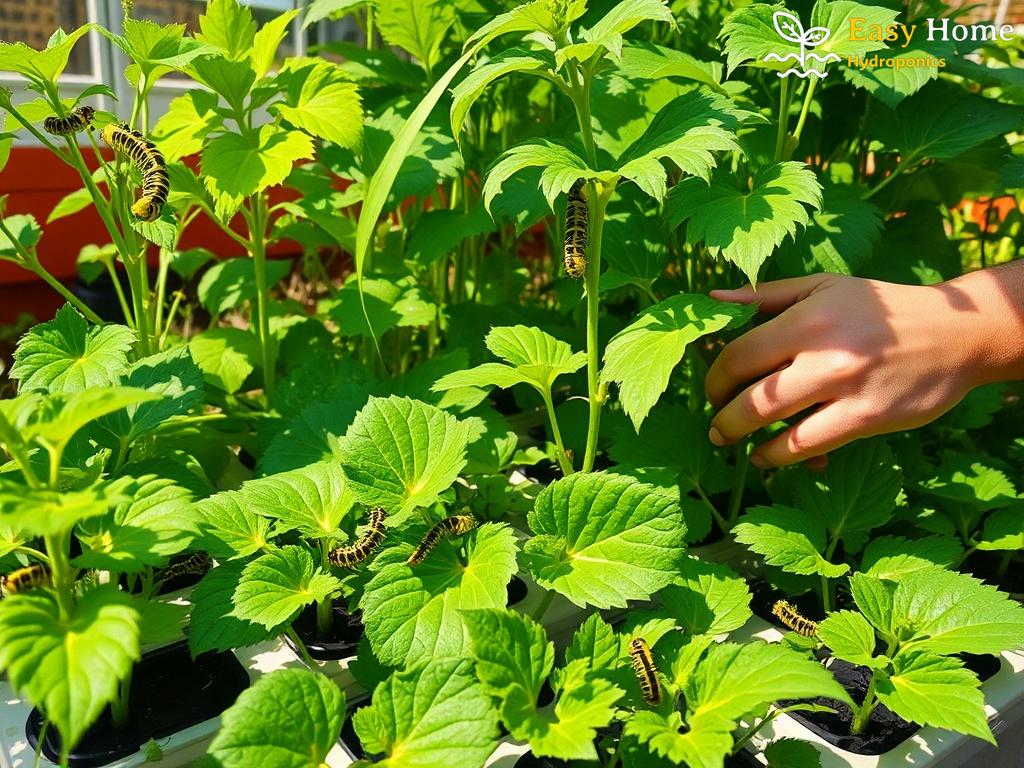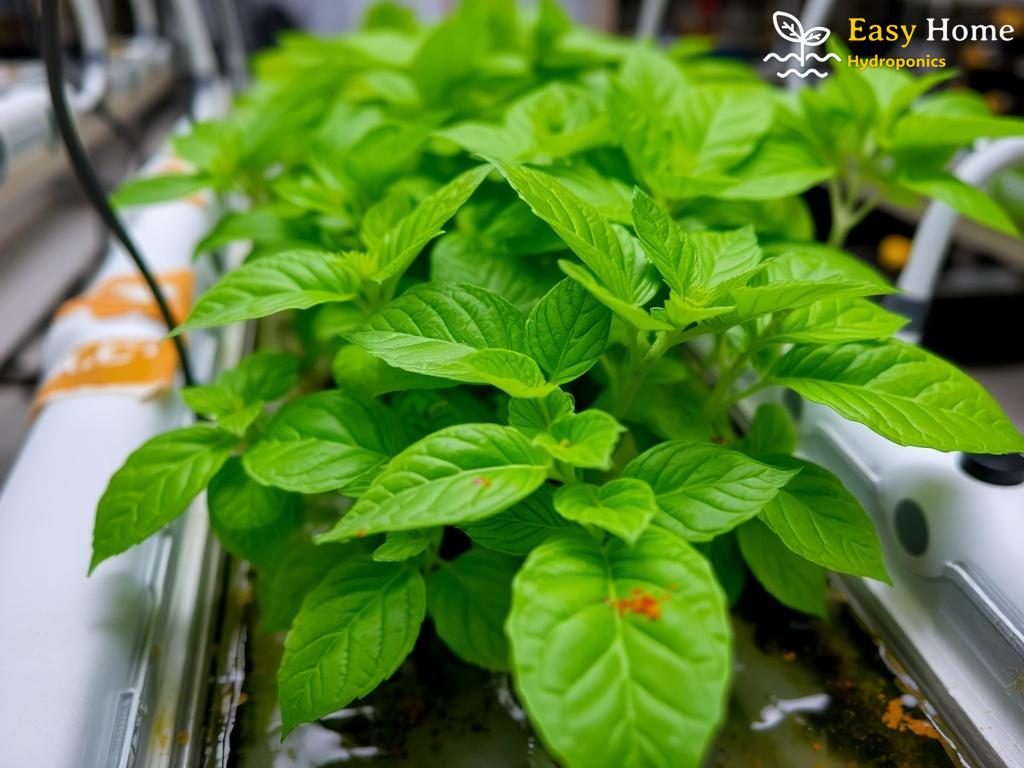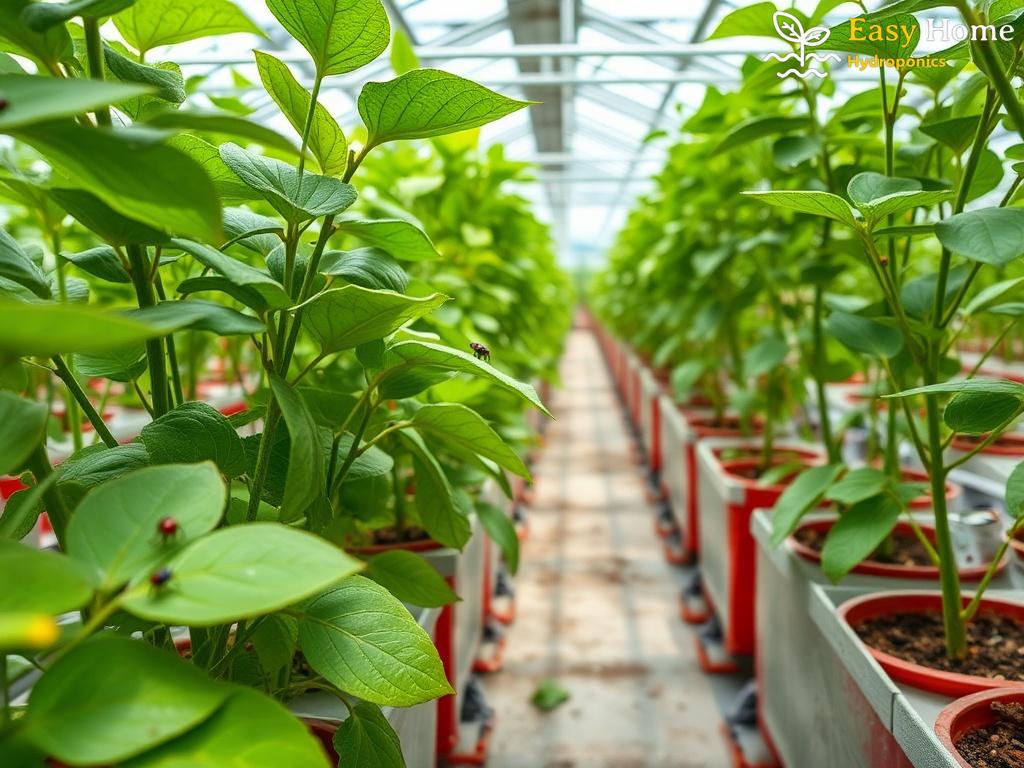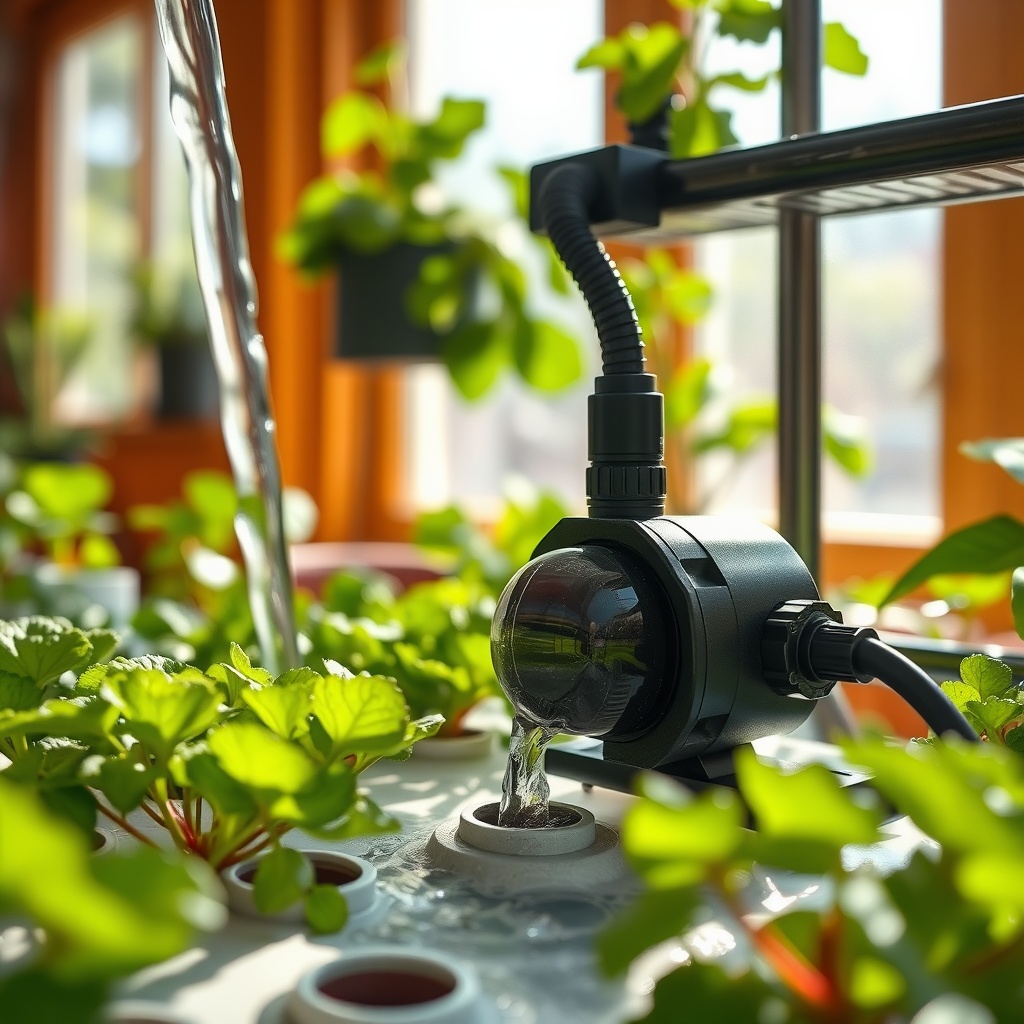Identifying Caterpillar Damage: Signs to Watch For
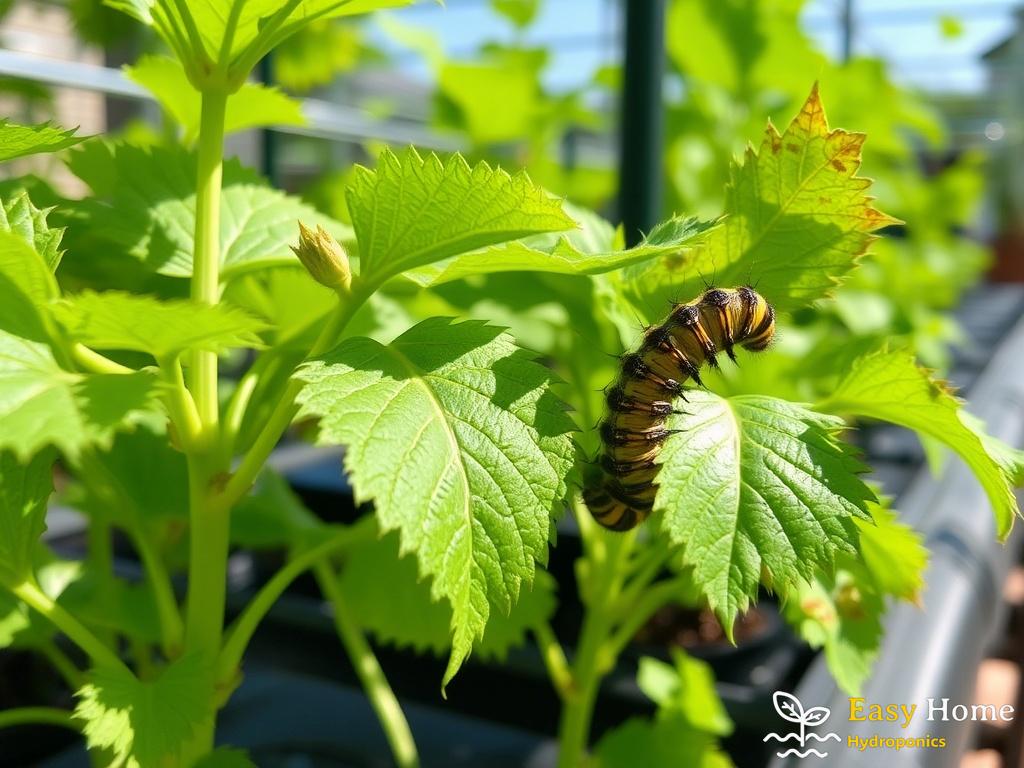
Unraveling the Mystery of Caterpillar Damage
Caterpillars can be a gardener’s worst nightmare, especially in outdoor hydroponic setups where delicate plants are at the mercy of these voracious eaters. Recognizing the signs of caterpillar damage early on can mean the difference between saving your plants and losing your harvest. In this guide, we’ll delve into the distinct signs that indicate your hydroponic plants might be under caterpillar siege.
Visual Clues of Caterpillar Infestation
When it comes to spotting caterpillar damage, your eyes are your best allies. The visual signs can vary, but here are some of the most common indicators:
- Chewed Leaves: One of the most evident signs is the presence of irregular holes in leaves. Caterpillars tend to munch on the foliage, leaving behind a lace-like appearance.
- Frass: If you notice small dark pellets (caterpillar droppings) beneath your plants, it’s a clear sign of caterpillar activity.
- Silken Threads: Some caterpillars produce silk threads as they feed or move. Finding these strands can be a telltale sign of a hungry caterpillar nearby.
- Shedding Skin: As caterpillars grow, they shed their skin. If you find small, discarded skins on or around your plants, caterpillars are likely present.
Behavioral Signs to Keep an Eye On
While visual signs are crucial, understanding caterpillar behavior can also help in identifying their presence. Observing how your plants react to certain situations can reveal much about the health of your hydroponic setup:
- Wilting Plants: Caterpillar feeding can stress plants, leading to wilting. If plant health declines suddenly, check for hidden pests.
- Loss of Growth: If your plants seem to halt their growth or display stunted development, it could be due to caterpillar damage.
- Unusual Leaf Discoloration: Watch for yellowing or browning leaves, which may indicate that the plant is struggling due to caterpillar feeding.
Table of Common Caterpillar Species and Their Signs
| Caterpillar Species | Signs of Damage | Preferred Plants |
|---|---|---|
| Eastern Tent Caterpillar | Webbed nests, defoliation | Cherry, Apple |
| Fall Armyworm | Irregular holes, frass | Grass, Corn |
| Hornworm | Large holes, green droppings | Tomato, Pepper |
Understanding these signs and species can empower you as a gardener to act swiftly and effectively. Monitoring your plants regularly and being aware of the signs of caterpillar damage can help ensure that your hydroponic garden thrives in the face of these pests.
Effective Prevention Strategies for Caterpillar Infestations
Dealing with caterpillar damage can be a challenging feat for hydroponic gardeners, but the key to success often lies in proactive prevention strategies. Understanding how to effectively deter these pests before they wreak havoc on your delicate plants is essential. By implementing a combination of natural deterrents, vigilant monitoring, and strategic gardening practices, you can safeguard your outdoor hydroponic setup from an onslaught of hungry caterpillars. Let’s explore some innovative strategies that can keep your garden flourishing.
Utilizing Natural Deterrents
One of the most effective methods to prevent caterpillar infestations is through the use of natural deterrents. Certain plants, such as marigolds and nasturtiums, can act as protective barriers due to their pungent scents that repel pests. Incorporating these companion plants into your hydroponic system not only beautifies your setup but also creates an inhospitable environment for caterpillars. Additionally, the application of organic sprays, like neem oil or insecticidal soap, can serve as a non-toxic option to keep caterpillars at bay while remaining safe for your plants.
Regular Monitoring and Maintenance
Staying ahead of caterpillar damage requires regular vigilance. Establishing a routine to inspect your plants can significantly reduce the risk of infestation. Look for subtle signs of caterpillar activity, such as frass, chewed leaves, or the presence of silk threads. Furthermore, maintaining optimal plant health through proper watering, nutrient delivery, and pruning can enhance your plants’ resilience against pests. Remember, a healthy plant is less attractive to caterpillars and better equipped to withstand any potential damage.
Implementing Physical Barriers
Physical barriers are another powerful tool in the fight against caterpillar infestations. Using floating row covers or mesh netting can protect your plants from caterpillars while still allowing sunlight and moisture to reach them. This method not only prevents caterpillars from accessing your hydroponic plants but also keeps other pests at bay. Regularly check your barriers to ensure they are secure, as any gaps may invite unwanted visitors into your garden. By combining these physical barriers with the aforementioned strategies, you create a multi-faceted defense system that can significantly reduce the likelihood of caterpillar damage.
Natural Remedies: Organic Solutions to Combat Caterpillars
When confronted with the havoc that caterpillars can wreak on your outdoor hydroponic garden, it’s crucial to know that solutions exist beyond chemical pesticides. Embracing organic remedies not only ensures the safety of your plants but also the health of the ecosystem surrounding them. This approach to pest management allows you to reclaim your garden without introducing harmful substances. Let’s dive into the world of natural solutions that can effectively combat these pesky invaders.
Harnessing the Power of Nature
One of the standout organic solutions is the use of neem oil, derived from the seeds of the neem tree. Its potent properties disrupt the life cycle of caterpillars, making it difficult for them to feed and grow. Spraying a diluted neem oil solution on your plants creates a protective shield against these pests while remaining harmless to beneficial insects. Additionally, you can consider using insecticidal soap, which works by suffocating the caterpillars upon contact. This method is particularly effective when targeting young, tender caterpillars that are still developing. The beauty of these organic treatments is that they allow your plants to thrive while simultaneously tackling the caterpillar problem.
Aromatic Allies in the Garden
Certain plants possess natural pest-repelling qualities that can be strategically incorporated into your hydroponic setup. For instance, marigolds are renowned for their ability to deter a variety of pests, including caterpillars, due to their strong scent. Planting these vibrant flowers not only enhances the aesthetic appeal of your garden but also creates an unwelcoming atmosphere for caterpillars. Similarly, nasturtiums can be used as a trap crop, luring caterpillars away from your primary plants. By integrating these aromatic allies, you can create a diverse plant ecosystem that promotes health and well-being while effectively warding off pests.
The integration of organic solutions into your pest management strategy can transform your hydroponic garden into a flourishing haven. By employing natural remedies like neem oil, insecticidal soaps, and companion planting, you can effectively combat caterpillar damage while preserving the delicate balance of your garden’s ecosystem. Embrace these natural allies, and watch your outdoor hydroponic setup thrive despite the challenges posed by caterpillars.
Rehabilitation Techniques: Reviving Damaged Hydroponic Plants
After a caterpillar invasion, witnessing your cherished hydroponic plants in distress can be disheartening. However, the good news is that with the right rehabilitation techniques, you can restore their health and vitality. This process requires a combination of nurturing care, strategic interventions, and a touch of patience. The following methods will guide you in reviving your plants and ensuring that they not only survive but thrive in your outdoor hydroponic setup.
Assessing Damage: A Crucial First Step
Understanding the extent of caterpillar damage is vital before diving into recovery efforts. Take the time to closely inspect your plants, noting the areas affected and the type of damage incurred. This will inform your next steps and help you prioritize care for the most severely impacted specimens.
Revitalization Strategies: Steps to Take
When it comes to bringing your plants back to life, consider the following strategies:
- Pruning Affected Areas: Start by trimming away any severely damaged leaves and stems. This not only improves the appearance of your plants but also redirects their energy towards new growth.
- Boosting Nutrient Levels: Rejuvenate your plants by adjusting their nutrient solution. Incorporate a balanced fertilizer rich in nitrogen, phosphorous, and potassium to promote vigorous regrowth.
- Hydration is Key: Ensure your plants are receiving adequate water. A consistent watering schedule will help them recover from stress and encourage healthy new growth.
- Provide Optimal Light Conditions: Adequate sunlight is crucial for recovery. Position your setup to maximize exposure to natural light, or supplement with grow lights if necessary.
- Implementing Pest Control Measures: While you may have dealt with the initial caterpillar issue, it’s essential to monitor for any remaining pests. Use organic pest control methods, such as neem oil or insecticidal soap, to prevent further infestations.
Monitoring Progress: Staying Vigilant
The journey to recovery doesn’t end with the initial rehabilitation steps. Continuous monitoring is essential for ensuring that your plants are on the right path to recovery. Keep an eye out for new growth, changes in leaf color, and overall plant vitality. Regular assessments will empower you to make timely adjustments to your care routine.
| Signs of Recovery | Action Required |
|---|---|
| New Leaf Growth | Continue regular care and nutrients |
| Improved Color | Maintain current light and water conditions |
| Increased Height | Consider additional support for taller plants |
By employing these rehabilitation techniques, you can breathe new life into your hydroponic garden after the turmoil caused by caterpillar infestations. Reviving your plants not only restores your garden’s beauty but also reinforces your commitment to sustainable gardening practices.
Long-Term Management: Sustainable Practices for Caterpillar Control
Embracing Ecological Harmony in Your Hydroponic Garden
In the pursuit of a flourishing outdoor hydroponic setup, the battle against caterpillar infestations can feel relentless. However, the key to effective pest management lies in the shift toward sustainable practices that not only address immediate threats but also promote long-term ecological balance. By implementing strategic measures that enhance plant resilience and foster a healthy ecosystem, gardeners can create a robust defense against these pests.
Building a Resilient Ecosystem
The cornerstone of sustainable caterpillar control is the establishment of an integrated pest management (IPM) approach. This holistic strategy combines various methods to minimize the reliance on chemical interventions. Begin by introducing beneficial insects, such as ladybugs and lacewings, which naturally predate on caterpillars and their eggs. By fostering a welcoming environment for these allies, you can significantly reduce the caterpillar population without compromising the health of your plants.
Moreover, consider incorporating diverse plant species into your hydroponic system. Biodiversity not only enhances aesthetic appeal but also creates a more resilient garden. By mixing flowering plants with your primary crops, you can attract pollinators and beneficial insects while creating a multi-layered defense against caterpillars. The diverse root systems and foliage of various plants also support a healthier soil ecosystem, enabling plants to thrive in the face of potential threats.
Proactive Monitoring and Adaptive Management
Regular monitoring is essential for maintaining the health of your hydroponic setup. Establish a habit of checking your plants for signs of caterpillar activity and assess their overall condition. By staying vigilant, you can catch infestations early and implement control measures before they escalate. Moreover, adapting your management strategies based on observations can lead to more effective results. For instance, if you notice a specific caterpillar species repeatedly targeting your plants, you can tailor your preventive measures accordingly.
Utilizing organic amendments, such as compost and mulch, can bolster plant health and improve their resistance to pests. These materials enrich the soil with vital nutrients while promoting beneficial microbial activity. Healthy plants, in turn, are less susceptible to caterpillar damage, creating a self-sustaining cycle of growth and protection. Remember, the goal is not just to eliminate caterpillars but to create an environment where your plants can flourish despite their presence.
| Practice | Benefits |
|---|---|
| Integrated Pest Management (IPM) | Reduces chemical use and encourages beneficial insects. |
| Biodiversity | Increases resilience against pests and enhances ecosystem health. |
| Regular Monitoring | Early detection of infestations leads to timely interventions. |
| Organic Amendments | Improves soil health, promoting plant vigor and resistance. |
By weaving these sustainable practices into your gardening routine, you not only address the challenges posed by caterpillars but also build a thriving ecosystem that supports long-term success. In this way, your outdoor hydroponic setup can become a testament to the harmony between nature and gardening, demonstrating that with the right strategies, you can cultivate a flourishing sanctuary free from the ravages of pests.

